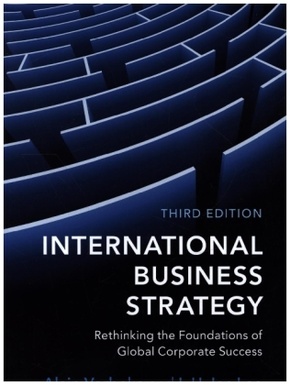
International Business Strategy - Rethinking the Foundations of Global Corporate Success
| Verlag | Cambridge University Press |
| Auflage | 2021 |
| Seiten | 675 |
| Format | 17,2 x 2,5 x 24,5 cm |
| Gewicht | 1000 g |
| Artikeltyp | Englisches Buch |
| EAN | 9781108738378 |
| Bestell-Nr | 10873837UA |
Now in its third edition, this core textbook combines analytical rigour and true managerial insight on the functioning and strategy of large multinational enterprises (MNEs).
Now in its third edition, this core textbook for advanced undergraduate, graduate, and postgraduate students combines analytical rigour and managerial insight on the functioning and strategy of large multinational enterprises (MNEs). Verbeke and Lee develop an original conceptual model that supports student learning by providing an integrated perspective, rooted in theory and practice. The discussion also includes unique commentaries on seventy-four seminal articles published in the Harvard Business Review, the Sloan Management Review, and the California Management Review over the past four decades, demonstrating how the key insights can be applied to real businesses engaged in international expansion programmes, especially as they venture into high-distance markets. This third edition has been thoroughly updated and features new sections on multinational entrepreneurship, strategic challenges in the new economy, and international business strategy during globally disruptive event s, including the COVID-19 pandemic. Students will benefit from updated case studies, improved learning features, and a wide range of online resources.
Inhaltsverzeichnis:
List of figures; List of tables; About the authors; Foreword from Jean-François Hennart; Acknowledgements; List of abbreviations; Walkthrough; Introduction and overview of the book's framework; Part I. Core Concepts; 1. Conceptual foundations of international business strategy; 2. The critical role of firm-specific advantages; 3. The nature of home country location advantages; 4. The problem with host country location advantages; 5. Combining firm-specific advantages and location advantages in a multinational network; Part II. Functional Issues; 6. International innovation; 7. International sourcing and production; 8. International finance; 9. International marketing;10. Managing managers in the multinational enterprise; Part III. Dynamics of Global Strategy; 11. Entry mode dynamics 1: Foreign distributors; 12. Entry mode dynamics 2: Strategic alliance partners; 13. Entry mode dynamics 3: Mergers and acquisitions; 14. The role of emerging economies; 15. Emerging economy multinatio nal enterprises; 16. Multinational entrepreneurship; 17A. International strategies of corporate social responsibility; 17B. International strategies of corporate environmental sustainability; Conclusion: The true foundations of global corporate success; Notes; Index.
